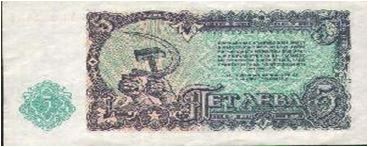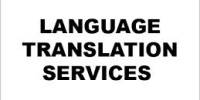No one is sure when the use of money for trading purposes actually began but it is certain that some sort of money was used during the earliest known civilizations, although it was not as we know money today.
As early humans progressed in their ability to reason with numbers and with the ability to communicate with other people within, and outside of their own societal boundaries, it became necessary to develop standards for paying for goods and services.
Purchasing power or wealth was determined by the number of domesticated animals such as sheep, oxen, camels, goats, and other animals that an individual owned, and trade was conducted using certain animals, skins, shells, beads, bones, pebbles, and other items that were considered to have value.
Standard forms of money were developed and used for the purchase of goods and services, as well as for paying debt that was owed to others. The development of monetary standards also became a means of collecting taxes.
It has been noted that measurements of value were developed and used by the Chinese, Egyptians, Sumarians, and other societies around the Middle East, Africa, Asia, and Europe. Those early forms of money paved the way for what we use today to transact our business.
The use of metallic coins, gold and silver, date back to the early Egyptians and Lydians and became a standard for Greek and Roman societies. Eventually, coinage of gold, bronze, and silver became standard throughout Eruope and the rest of the world.
Paper money is thought to have developed in China during the ninth century. It was the English who started issuing certificates of deposit in the seventeenth century, starting the first successful European entry in the use of paper money.
Although coins are still used today in most societies, they have lost their importance to paper money and paper money might someday become obsolete due to electronic banking and credit and debit cards.
The company was incorporated (Subchapter S Corporation) as the Center for Economic Revitalization in state of Vermont by Ritchie and Peter Lowry in 1982. The first publications by CENTER were two newsletters, GOOD MONEY and NETBACK. Shortly thereafter, CENTER published special handbooks and guides about socially responsible investing, including a how-to guide for beginners, a handbook detailing how non-nuclear and alternative/renewable energy companies with good environmental records provided investors with better long-term gains than utilities with nuclear-generated power, and a handbook describing the GOOD MONEY Industrial and Utility Averages.
In 1985, the company initiated social audit services for both individual and institutional investors who wanted their portfolios screened for a variety of social issues. Related to these audits, CENTER began publication of Issue Papers that described the strategies used by social investors interested in a variety of social issues. The issues included animal rights, defense contractors, environmental pollution, minorities, nuclear power, South Africa, and womens issues.
In the Spring of 1986, the business was reorganized and the company’s name was changed to GOOD MONEY Publications, Inc. to more accurately reflect its mission as a for-profit, educational and publishing company for the social investment community. New products included an annual Guide to the Socially Screened Funds, an Energy, Environment & Animal Rights Strategy Report, and a pamphlet describing the opportunities available for socially concerned consumers in banking, retirement accounts, insurance, telephone service and everyday buying of consumer products. A new service, The Social Investors Bookshelf, made available books, videos and cassettes dealing with socially responsible investing, environmental investing and socially responsible business practices. Another new product consisted of overhead transparencies and handouts for use in public presentations about SRI and related issues.
In 1991, GOOD MONEY: A Guide to Profitable Social Investing in the ’90s by Ritchie P. Lowry was published by W. W. Norton & Company in hardcover. Norton published a paperback version in 1993, and a Japanese-language version was published by Shobun-sha Publishers in Tokyo in 1992. In 1994, GOOD MONEY Publications completed the filming with two Massachusetts-based television production companies of a 14-minute Preview tape for a proposed television series about socially responsible consuming, investing and companies, GOOD MONEY Reports. A new company, Good Money Reports, Inc. was formed to market the proposed series. GOOD MONEY Publications became active in a Socially Responsible Funds topic in the Morningstar Forum and Socially Responsible Investing topic in The Motley Fool both on America Online. The company has also participated in Morningstar’s Socially Responsible Investing Forum at their web site. Once again, the company was reorganized and the name was changed to Good Money, Inc. to reflect the broadening mission as a multi-media information provider for socially and environmentally concerned consumers, investors and businesspeople.
Over the years, the business has been featured on the Tom Brokaw’s NBC Nightly News and in hundreds of national newspapers and magazines such as Barron’s, The Wall Street Journal, the Washington Post and Working Woman. Both Ritchie, who is also a Professor of Sociology at Boston College, and Peter Lowry have given dozens of public presentations and radio/television interviews about socially responsible investing, consuming and businesses.
Before 2.500 B.C., in the cities in the valleys of the Tigris, the Euphrates, the Indus and the Nile rivers, there existed a very special type of coinage.

The people brought their excess products to the temples of the walled cities and there, the priest-accountants opened an account for each person, with clay tablets, recording the deposit of their products in the temple’s store-houses and establishing a quantity of abstract money corresponding to the merchandise deposited.
Subsequently, if these same people wished to acquire other types of products from the temple, the inverse procedure was followed.
For each transaction, a document made of baked clay was created, with the name of the buyer, the merchandise exchanged and the quantity of monetary units involved. This is what we call an «Invoice-cheque».
For important transactions and for transactions between different cities, a system of guaranteed transport was established, based on «bullae». In the carrier’s cart, a baked clay ball was carried, which contained in its interior the tablets which represented the merchandise being transported. The list was also engraved on the outside of the ball. Upon arrival, the ball was opened and the contents of the cart was checked.
The area became increasingly peaceful in those years, partly because of the protection afforded by the cities’ walls, and partly because of the prosperity which resulted from this system of exchange.
The coinage was an abstract instrument, the value of which was derived from a physical merchandise. Each commercial transaction left its corresponding judicial record, in the form of clay tablets.
All this came to an end with the appearance of anonymous coins made of gold, silver, copper and bronze. This new type of coinage, anonymous, concrete and independant of merchandise, makes corruption and bribery much easier.
With the appearance of anonymous coinage, in 2,500 B.C., came the advent of private banking, an authentic «power in the shadows». And the temple servants changed their trade and dedicated themselves to inventing religions.
From that moment on there was a return to imperialism. The impenetrable walls fell, not to the hammer-blows of the as-yet non-existant catapults and cross-bows, but to the bribing of some of the guards by the besieging forces. Later, the traitors could be quietly executed and the invadors could invent myths such as the «Wooden Horse of Troy» and the «Trumpets of Jericho».

Anonymous coinage was to continue its evolution, until it became today’s bank notes and bearer cheques. The various political institutions created to give citizens the illusion of being protected by them suffer the onslaught of the «wielders of power» who bribe and corrupt politicians, specialists and judges.
And now we come to the economic proposals of the Joan Bardina Studies Center. Our feeling is that we should return to a non-anonymous, responsabilising exchange system, similar to that of the ancient temples but using today’s technology to implement afresh the «invoice-cheque».
To achieve this, it will be necessary to set up a public data-transmission system, free of charge and which all are obliged to use. There must also be a series of guarantees to avoid the concentration of power which control of this network would imply.
Among these guarantees, we propose a genuine separation of the executive, legislative and judicial functions. The judicial system, independant of the executive and legislative systems, should be allocated a fixed percentage of the state’s general budget assigned by constitutional mandate, and not have organs such as the «Consejo General del Poder Judicial» («General Council of the Judiciary»), which exists in the Spanish state and which pretends to control the judicial system according to the dictates of the dominant political parties via the executive and legislative branches.
We believe that control of the population by means of data networks is already being exercised by private banks via their networks. Our proposal, rather than the creation of a new network, would tend to bring order to existing networks, so that the private information about each individual is at the disposal of that person, and of the justice system, should judicial proceedings are instigated. Statistical information on the economy as a whole should be at the disposition of all its members.
An important aspect which must be borne in mind is that, with this reform, the community must guarantee a minimum income for all those who do not have a means of support, whether a job, or any kind of pension. Logically, with this system, the debasing means of achieving income from the submerged economy would disappear.
To balance the budget, we propose a hypothesis which, should it work out, could provide this basic income or social salary without the need for onerous tax systems. This hypothesis is based on the community wealth that could be created within the economy, based on excesses of production and the money which could be invented to acquire them. This money would be distributed among the most needy.

Pull that dollar bill from your wallet. Anything else you have as well—perhaps a five, ten or twenty. Lay them down side by side and study them carefully. Notice the artistry and great detail. All the seals, stamps and identification numbers, which make them seem so official. It makes you really wonder where these numbers could take you. Perhaps Fort Knox—where a little piece of gold lays in waiting ensuring the value of your dollars?
Nope. It may surprise you to learn that no matter what the denomination; every circulating bill you could possibly have is worth about 3 cents apiece for the paper and the ink.
So why can I drive down the street to my local mini-mart and buy a Twix with that dollar bill? Why would someone give me a crunchy cookie wrapped in delicious chocolate for a piece of paper worth a measly three cents? One word: Trust. We all trust that our money is worth what it says it’s worth based on the word of our government. Yet the true value of a dollar really begins only where perception departs from reality. While we all trust that our money is worth something, we actually determine what that value is. By collectively setting and demanding the value of the goods we produce or the work we do, the value of a dollar shifts. Furthermore investors on Wall Street and around the world regularly speculate on whether these values are going up or down and then buy or sell our currency on the open market for profit. All together this means the value of that dollar in your wallet is always changing depending solely on what people think.
t wasn’t always this way. In the span of human history people have used a variety of commonly valued materials as currency, such as: rocks, salt, wood, gold, silver, platinum and copper. Many of you may remember coming across an old greenback, silver dollar or buffalo head nickel without knowing that Americans have used a variety other forms of natural currency throughout history. While cigarettes are taking quite a beating these days, in the 1600s, Americans in the South actually used tobacco leaves and tobacco notes as legal tender. For people who would have rather smoked their weeks pay, they could always have depended on Spanish “pieces of eight,” which were made of gold, to be accepted at the local feed store. For larger purchases most businesses would except cows and pigs as well.
Americans depended on these currencies with some real basis of value because no one trusted the word of the government which backed their printed money. Throughout history paper money has always suffered a crisis in confidence. It was first developed in China in the thirteenth century and was adopted in Europe after the return of Marco Polo. The logic behind currency notes was that metal coins with intrinsic value were too difficult to carry around place to place (especially if you were wealthy). Thus, the King or the local government would allow the treasury to accept the deposit of gold coins in return for issuing “bills” or receipts stating how much any given individual had deposited.
People could then trade these receipts amongst each other based on the value they had deposited. Thus, paper money was always a proxy for some other valuable good —meaning at some point anyone could turn your bills in and get some gold back.
The trust and the problem with this paper money is that throughout history governments have printed more bills than they have gold to finance wars, castles, fancy china and suits of armor. Whenever it became clear that there was more paper than gold, the value of the bills would drop. This was largely the problem throughout the early history of America. The colonies each had their own currencies, which were in reality like the dollars in your wallet today—near worthless. And they knew it! So few people would except in exchange for anything, the colony governments passed laws to make it “legal tender.” This meant that any business refusing these bills would be subject to severe penalties. While these words remain on our money today, they had little effect on people at the time.
Making these problems even worse was a rampant plague of counterfeiting which occurred throughout the colonies. A currency with already little value on its own could not survive a flood of impostor bills. This money was so worthless that Britain passed a law making it illegal for the colonies to use “legal tender” bills. After the Declaration of Independence, the Continental Congress struck back with the resolution, “Any person who shall hereafter be so lost to all virtue and regard for his country, as to refuse to receive said bills in payment….shall be deemed, published and treated as an enemy of his country.” The punishments for refusal increased as the pressures of war swept across the colonies. Fines were supplemented by imprisonment and when this didn’t work the ante was upped to a loss of both ears.
Yet as George Washington said, “A wagon-load of money will scarcely purchase a wagon-load of provisions.” Which makes it all the more confusing why Washington would have been throwing silver dollars across the Potomac. Historian Carl Moore believes, “it was conceivable that he could have thrown it a long distance if so inclined. But George Washington was a conservative and thrifty person and it is questionable that he would have wasted a silver dollar.”
Washington played a critical role in the development of American money. After the War, Congress produced a plan for new coins. Washington was shocked to see his head as the central element. He felt that throughout history, monarchs had used their image on coins as a show of power and prestige. Washington told Congress, I am certain it will be more agreeable to the citizens of the United States to see the head of Liberty on their coin, than the head of presidents.” Thus, America has a tradition of non-presidents on their coins. For example the Indian head penny, buffalo nickel, the Liberty Dollar and the Susan B. Anthony dollar.
In print, only two men have appeared on American currency which were not presidents. The first was Benjamin Franklin on the hundred-dollar bill and the second Head of the Treasury, Salmon Chase, on the $10,000 bill. You may recognize the name Chase that lives on through Chase Manhattan Bank and millions of credit cards today. While no living individual has ever seen their portraits grace a dollar bill, a few have seen their mugs in coin. This occurred for two reasons. The first was that the US federal government minted coins but did not print any paper money from 1790 to 1861.
This rather confusing state of affairs left the young American nation without a united currency. Throughout this period our money was caught in a battle over slavery. Southern states took every opportunity to fight for “state rights” which would protect their economic well being. The control and ability to print money was one of the surest ways to ensure their sovereignty. Thus, it is of little surprise that the US Federal government was not able to print its own money until 1861.
The some 8,000 different forms of state and private currencies that existed before this time had varying values depending on whether the local bank backed the currency with gold or silver. Each bank had currency of varying shapes, sizes and colors. With few regulations they rarely backed the currency with any assets and therefore inflation and instability was rampant. The federal government learned valuable lessons from this experience and thus made their currency exchangeable for coin, gold or silver in 1879. Thus these bills are distinguished from our currency today by the imprint of the words “Payable to Bearer on Demand.” With varying releases by 1886 there were $1, $2, $5, $10, $20, $50, $100, $500 and $1000 federal bills in circulation.
There are numerous myths about the origins of money. The concept of money is often confused with coinage. Coins are a relatively modern form of money. Their first appearance was probably among the Lydians, in Asia Minor in the 7th century BC. And whether these coins were used as money in the modern sense has also been questioned.
To determine the earliest use of money, we need to define what we mean by money. We will return to this issue shortly. But with any reasonable definition the first use of money is as old as human civilization. The early Persians deposited their grain in state or church grainaries. The receipts of deposit were then used as methods of payment in the economies. Thus, banks were invented before coins. Ancient Egypt had a similar system, but instead of receipts they used orders of withdrawal – thus making their system very close to that of modern checks. In fact, during Alexander the great’s period, the grainaries were linked together, making checks in the 3rd century BC more convenient than British checks in the 1980s. The Egyptians had in fact invented the first giro system.
However, money is older than written history. Recent anthropological and linguistic research indicates that not only is money very old, but it’s origin has little to do with trading, thus contradicting another common myth. Rather, money was first used in a social setting. Probably at first as a method of punishment. Dowries were probably also an early use. These early origins have left their traces in our language – as in “pay one’s dues”.
Early stone age man began the use of precious metals as money. Until the invention of coins, metals were weighed to determine their value. Counting is of course more practical, the first standardized ingots appeared around 2200 BC. Other commonplace objects were subsequently used in the abstract sense, for example miniature axes, nails, swords, etc.
Full standardization arrived with coins, approximately 700 BC. The first printed money appeared in China, around 800 AD. The first severe inflation was in the 11th century AD. The Mongols adapted the bank note system in the 13th century, which Marco Polo wrote about. The Mongol bank notes were “legal tender”, I.e. it was a capital offense to refuse them as payment. By the late 1400s, centuries of inflation found eliminated printed bank notes in China. They were reinvented in Europe in the wake 17th century.
The lower image is of the Greek Drachma, which had a constant value from the 6th century BC to the 2nd century BC, and became standard coinage in much of Asia and Europe.
BANGLADESH
- A brief monetary history:
- Indian currency, till 1948
- Pakistani currency, 1948-72
- Taka = (Pakistani Rupee) =100 Paise, from 1972
- For earlier issues see:
- India (British), till 1947
- Pakistan, 1947-71
| Pick # | Date | |
| Republic (seceded from Pakistan in 1971) | ||
| 1-3 | (1971) | 1, 1, 5, 5, 5, 10, 10 rupees; overprint |
| 4-6C | (1972-89) | 1, 1, 1, 1, 1, 2 taka |
| 7-9 | (1971) | 5, 10, 100 taka |
| 10-12 | (1973) | 5, 10, 100 taka |
| 13-14 | (1974) | 5, 10 taka |
| 15-19 | (1976-7) | 5, 10, 50, 100, 500 taka |
| 20-24 | (1978-82) | 5, 10, 20, 50, 100 taka |
| 25-30 | (1982-88) | 5, 10, 20, 50, 100, 500 taka |
| 31 | (1992) | 100 taka |
| 32 | (1997) | 10 taka |
| 33 | (1998) | 10 taka; commemorative isse: “Victory Day” |
| 34 | (1998) | 500 taka |
| 35-38 | 2000-1 | 10, 50, 100, 500 taka |
| 39-43 | 2002- | 10, 20, 50, 100, 500 taka |
| 44-45 | 2003– | 100, 500 taka |
Article Writing by: Asad Saimon
















